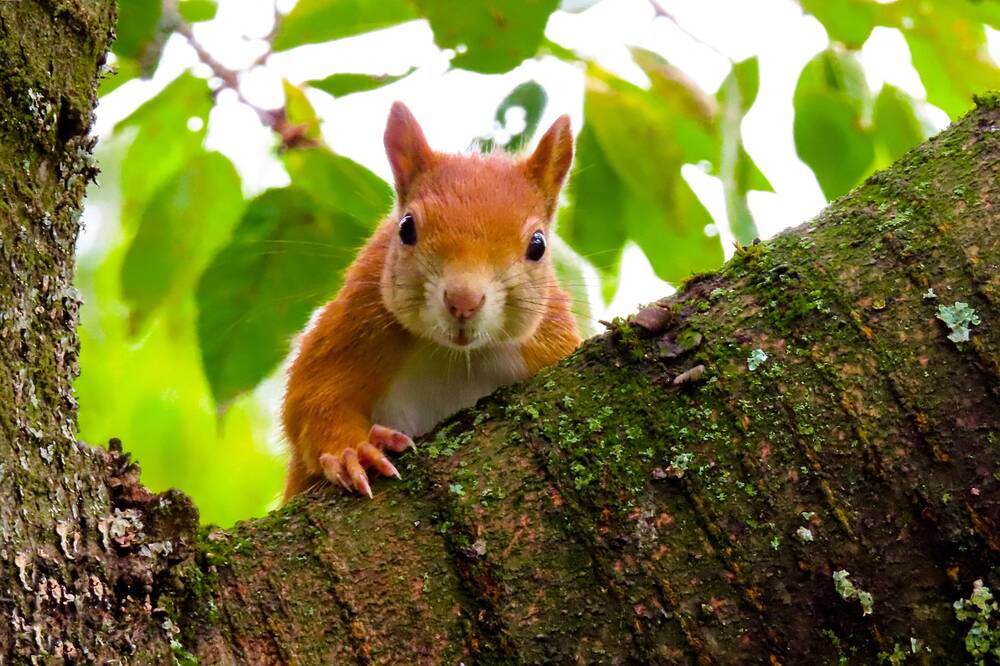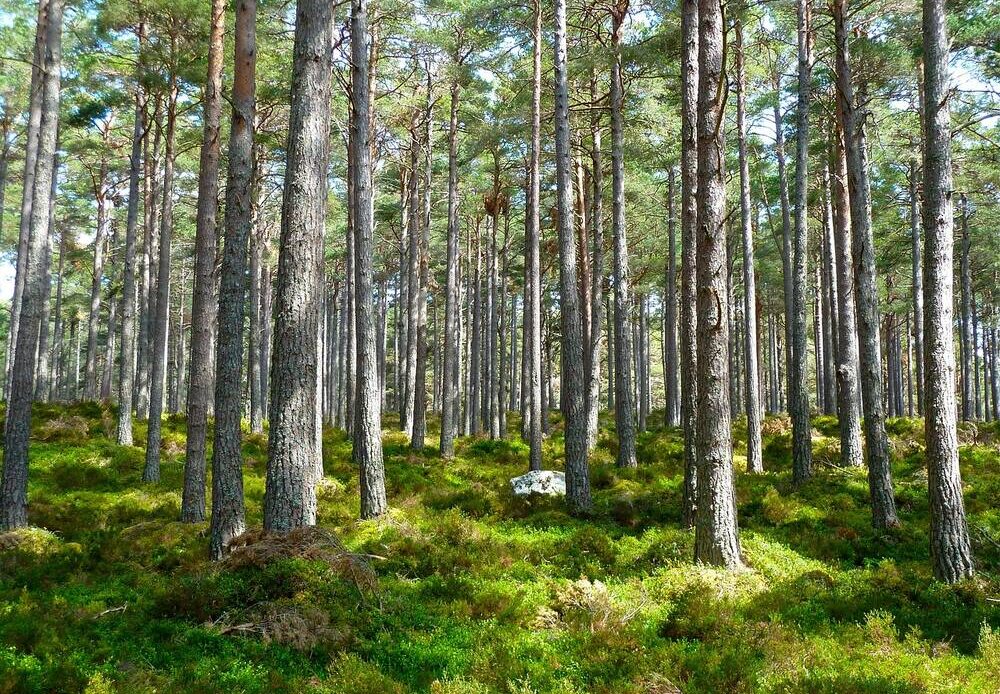Woods, forests, and other woodland habitats are crucial spaces for nature and provide multitudes of essential ecosystem services that we rely on for life, such as carbon sequestration which massively aids the mitigation of climate change.
There are many different types of these habitats, each with their unique critical traits and diverse contributions to the environment.
This article will delve into what woodland habitats are, their key features, their primary flora and fauna, historic and cultural relevance, and breaks down the dozens of types of specific woodland habitats from the mountainous Montane Woodlands to riverside Riparian Woodlands, detailing what makes them unique and their ecological conditions, external threats, wildlife and more.
What are Woodland Habitats?
Covering around 30% of the planet’s surface, woodland habitats are found in every continent besides Antarctica.
They support a variety of microhabitats from streams and hollow trees to dead wood. Their complex ecological interactions and structures lead to high levels of rich biodiversity, supported by varying water sources, like wetlands, ponds and streams, and rich, well-drained soil.
They are fantastic carbon sequesters, and threats from pollution, deforestation and urbanisation have bolstered emission levels and contributed negatively towards climate change. Many conservation efforts around the globe intend to restore woodland habitats for the sake of the planet, the environment and human wellbeing as a whole.
Key Features of Woodland Habitats
Ecosystems in woodland habitats are usually dominated by woody vegetation such as trees, shrubs or bushes, leading to a dense cover of nature that contributes towards a district ecosystem.
They are packed with understory vegetation; rich nature tucked under the main tree canopies, with smaller species adapted to lower levels of light like herbs, mosses and ferns. These are crucial habitats and food sources for an abundance of wildlife, sustaining ecosystem stability and nutrient cycling.
The forest floor is covered in litters of leaves, branches that have fallen and decaying organic matter. This is a rich ecosystem of life, sheltering small rodents and mammals, retaining moisture and soil humidity, insulating the soil, inhabiting decomposers like bacteria and fungi, plus homing vast networks of plant and tree roots.

The Different Types of Woodland Habitat
There are thousands of distinctive woodland habitats around the world, distributed alongside the diverse natural landscapes of our planet. Variations in climate such as temperature, rain and seasons utilised by certain vegetation and wildlife, varying soil compositions support different plant species and hydrology differing by location leads to contrasting levels of water availability. What’s more, the localised climate of larger regions can create its own microhabitats, each supporting unique woodland habitats.
Deciduous Woodland
These woodlands shed their leaves in autumn, commonly oak, maples, beeches, birches and ashes trees. They appear frequently in temperate regions that have 4 different seasons, able to support their life and nutrient cycles. The varying levels of light and moisture provide high flora and fauna diversity, complemented by rich, fertile soil in dense decaying leaf litter on the forest floor.
Coniferous Woodland
Usually found in colder climates at higher altitudes, like boreal forests (taiga), coniferous woodlands are dominated by conifers, or trees with needle-like leaves, such as pines, firs, spruces and cedars. They tend to be home species adapted to harsh climates, such as bears and moose.
Mixed Woodland
Mixed woodlands are a blend of deciduous and coniferous trees, with enhanced biodiversity providing additional environmental resilience and fight against external harm. The rich biodiversity can include year-round evergreen foliage, as well as seasonal deciduous foliage, supporting a variety of plant and animal species.
These are woodlands that have been consistently wooded since 1600 AD in the UK and elsewhere.
Ancient Woodland
Ancient woodlands contain trees that are at least 400 years old, such as Sherwood Forest in the UK. They offer high levels of biodiversity like the enhancing bluebell woods that appear every spring, moss-covered floors and anemone-rich areas. They consist of native tree species, such as the English oak, and are connected by complex soil ecologies and mycorrhizal networks. These woodlands have immense historical significance; the subject of many ancient fantasy folktales and fantasy, and also grounds for mediaeval hunting. They are well protected under conservation policies.
Secondary Woodland
These woods are regenerated from land that was cleared, such as a farm or quarry that has been abandoned. They tend to be a mix of tree species like confider stands alongside mixed hardwood trees. The dynamic ecosystem can follow successional stages, resulting in diverse wildlife that supports birds like the nightingale, rare butterflies and woodland mammals.
Broadleaf Woodland
These are dominated by broadleaf trees like Ash woods, Elm groves, Beech forests and Oaks, as well as deciduous trees like the Birch and Maple. This means they have a thick, dense canopy cover. They see seasonal fall that furthers the understory vegetation, with ferns, shrubs and wildflowers. These are home to woodpeckers, blue tits and butterflies, offering great picnic spots with scenic beauty.
Riparian Woodland
Riparian woodlands occur along rivers and streams, such as floodplain forests, riverbank woodlands and streamside forests. Their moist soil supports alders and willow, and they offer erosion protection, flood barriers, nutrient cycling and water purification. These are great wildlife corridors that enhance habitat connectivity and routes for migration, such as pathways for otters. Their diverse flora and fauna support both aquatic and terrestrial species.
Wet Woodland
Instead of occurring by water passages, wet woodlands occur in waterlogged soils, like marshlands, peat bogs and swamps. They usually occur in floodplains such as fenlands and marshy woodlands. With alder, willow and bog birch trees, to name a few, the habitats are key for amphibians such as frogs and newts. The carbon-rich, organic-rich soil fosters plant diversity, with the majority of invertebrates as well as bird habitats. These are conserved, as especially vulnerable to drainage from agriculture, water management and agricultural purposes.
Montane Woodland
Montane refers to habitats usually found at higher elevations, and these woodlands, such as Alpine forests, Highland woods and Subalpine zones, are found at high altitudes. The biodiversity here has adapted to the cold and harder conditions, with species like mountain birch, dwarf juniper or scots pine.
Lowland Woodland
In contrast, lowlands are found in lower altitude regions, like Southern England, River valleys or Coastal plains. Their soils tend to be fertile such as alluvial and rich loam soils, supporting diverse tree species from the Lime and Oak to the Elm. Insects, birds and mammals like the deer will utilise their habitats, and we use them for walking paths, nature reserves and picnic spots. These managed woodlands are easier to conserve.
Upland Woodland
While Montane Woodlands fall upon mountainous regions, upland woodlands include a broad range of elevations simply above lowlands. Depending on the geography, they can occur at various elevations, but usually not at those of Montane Woodlands. They have poor soil quality with rough terrain, rocky hillsides, rugged landscapes and thin, acidic and shallow soils. These are used commonly for grazing, like highland cattle and sheep pastures.
Mediterranean Woodland
These are found in Southern Europe, California and other Mediterranean climate zones, facing hot, dry summers and wet, mild winters. They have evergreens like the cork oak, and fire-adapted species that can sustain frequent wildfires. They face threats from overgrazing, with goats in Greece or sheep in Spain, and also from urbanisation with habitat loss and tourism pressures.
Temperate Woodland
These woodlands host a mixture of deciduous and evergreen trees, with four distinct seasons and high productivity. Their rich biomass and fast-growing trees contribute to a high soil quality that is nutrient-rich and fertile, supporting squirrels, birds and deer, alongside other diverse wildlife.
Tropical Woodland
Tropical woodlands appear near the equator, like Congo Basin, Southeast Asia and the Amazon Rainforest. These are lush biodiversity hotspots, with tropical monsoons, high humidity and constant warmth. They’re packed with species richness including various endemic diverse flora and fauna. This is supported by their rapid tree growth, leading to dense forests with tall canopy trees. They are critical for global climate regulation, with mass oxygen production and carbon cycling, but are largely threatened by deforestation and agricultural expansion.
Boreal Woodland
Boreal means northern regions and boreal woodlands occur in subarctic regions like the Siberian Taiga, Scandinavian forests, and Canadian Boreal Forest. These are dominated by coniferous trees that are well-adapted to cold and harsh climates with nutrient-poor soils. Their needle-like leaves shed snow, helping them thrive in freezing temperatures, plus reducing the loss of water. They have lower biodiversity, with simpler ecosystems.
Woodland Edge
Woodland edges appear between woodlands and the open habitats, a transition zone with high species diversity and plants that thrive with light, like shrubs, and sun-loving flowers. They provide key food and shelter sources for a range of pollinators and birds and are a buffer against agricultural runoff, vital for wildlife corridors.
Urban Woodland
These occur close to or within urban areas, such as Central Park in NYC or Epping Forest in London, predominantly maintained for recreation as sports fields or walking paths. Their mixed tree species contribute to landscape design, and the habitats support urban wildlife like squirrels and pigeons. They help with noise reduction, improve air quality and provide social and health benefits for community engagement, exercise and mental well-being.
Parkland Woodland
Parkland woodlands are when scattered trees occur in grassland, contributing largely towards historic landscapes like manor grounds, royal parks and English estates. They are also managed for aesthetic value and allow grazing from deer herbs or livestock. Veteran oaks and ancient chestnuts are examples of age-old trees that contribute to the rich biodiversity, heritage and beauty value.
Animals That Live In Woodland Habitat

Woodland habitats provide a variety of lush, biodiverse habitats each with their own ecosystem services that thrive in separate regions and offer homes to many key animals. Birds such as owls, woodpeckers, and songbirds fill the canopy while mammals like deer, foxes, and squirrels thrive among the trees. Amphibians like frogs and salamanders plus insects like beetles and butterflies, and an immense range of other fauna, contribute to the rich biodiversity of these ecosystems.
Plants & Flowers
It’s a challenging task to pinpoint the plants and flowers of woodland habitats due to their seemingly infinite biodiversity. Diverse species of trees, such as pines, maples, oaks, beeches or birches will frequently dominate a woodland habitat, each thriving in the specific soil and climate it has adapted to.
Shrubs, or small/medium woody plants with many stems, offer evergreen cover such as elderberry, hazelnut and dogwood, some providing nuts and berries as fantastic food sources.
In the spring, trillium, wood anemones, bluebells or violet flowers might carpet forest floors, contributing largely to seasonal beauty. Below this is the moss, soaking up moisture and keeping the soil stable.
Bloodroot, wild ginger or mayapple can cover the ground, providing unique foliage and distinct flowers. Epiphytic plants grow in humid temperatures, covering tree trunks and feeding off their organic matter and moisture.
Threats & Conservation
The most prominent threats to woodland habitats are logging, climate change, invasive species, deforestation, habitat fragmentation and air, water and soil pollution.
For instance, animal and plant health declines when pollutants degrade their soil and water quality, vital for their development. Invasive species can wipe out habitats, such as the emerald ash borer, an insect whose larvae feed on an ash tree’s inner bark, fatal for the free by disrupting its water and nutrient transportation abilities and causing death.
Logging is for the production of timber and wood products and involves cutting down trees for commercial purposes. Deforestation on the other hand is a permanent removal of woodlands and forests, typically making space for urbanisation, infrastructure development or agriculture.
Both of these practices can be delivered in sustainable ways, such as reforestation to compensate for biodiversity loss, agroforestry, selective logging to only harvest specific trees and allow regeneration, or reduced impact logging that reduces damage to surrounding nature.

The History of Woodland Habitats
Ancient forests used to dominate prehistoric landscapes. These forests would have been much older than the forests we know today, with comprehensive, multi-layered canopies of trees of different sizes and ages, some even centuries old.
Forests supported the earliest human life in many ways, such as wild rabbits, birds, berries and nuts for food, shelter made from branches, leaves and animal skins, flint for tools such as arrowheads, wooden spears or bows, and bone and antler tools for sewing, or carving.
In the agricultural revolution, deforestation enhanced to make way for settlements and farming, which intensified heavily from the mediaeval period to the industrial revolution alongside industry and agricultural growth.
Urban expansion provides an ongoing threat, however, modern practices try to adopt sustainable methods and reforestation as conscious climate efforts are adopted within global agendas.
Woodland Habitats Facts & Stats
Covering around a third of the Earth, these rich habitats are home to 80% of terrestrial flora and fauna as well as storing 45% of the world’s terrestrial carbon.
It’s predicted that around 10 million hectares of the planet’s forests are lost to deforestation a year, most significantly in Brazil, in the Amazon rainforest.
25% of modern medicines are predicted to come from rainforest plants, such as aspirin, coming from the willow bark or vincristine, coming from the Madagascar periwinkle. The rich biodiversity of a forest provides a plethora of genetic resources invaluable to pharmaceutical research, allowing us to understand diseases and bodily effects from a nuanced genetic lens.
What’s more, forests provide employment for 1.6 billion people, from smallholder farmers to indigenous communities.
More Information
https://www.woodlandtrust.org.uk/trees-woods-and-wildlife/habitats/
https://www.bbc.co.uk/bitesize/articles/zc42xnb
https://www.woodlandtrust.org.uk/trees-woods-and-wildlife/habitats
https://www.wildlifetrusts.org/habitats/woodland
https://www.woodlandtrust.org.uk/trees-woods-and-wildlife/animals

